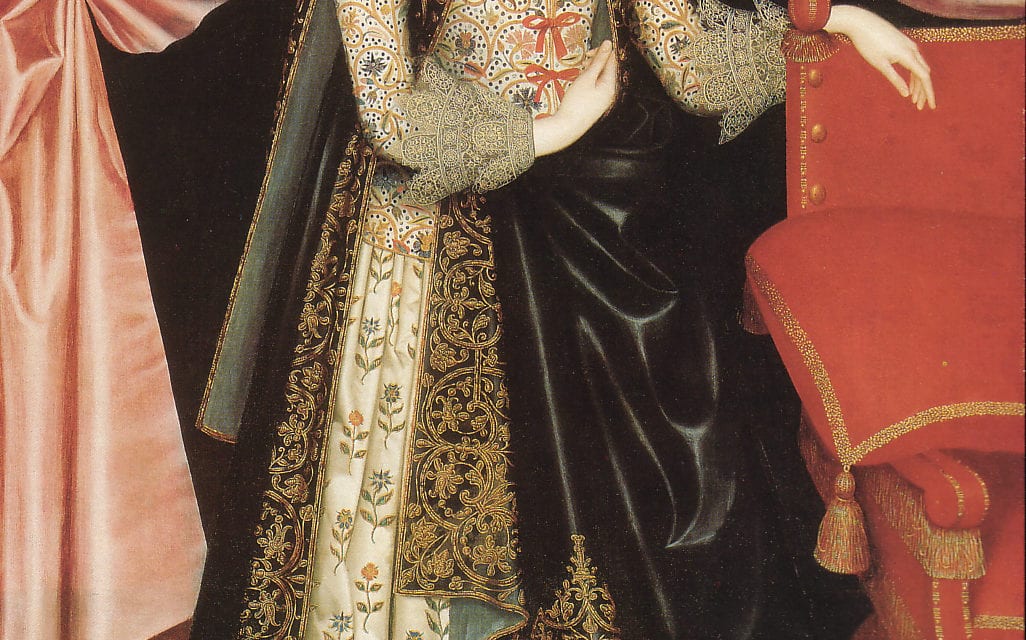

Today it seems incredible that the distinctive work of ‘Curtain Master’ William Larkin remained neglected and in question until 1952 when architectural historian James Lees-Milne rediscovered him. Larkin lived and worked in the City of London, his relatively short career spanned the years 1609 until his death ten years later.
Famed for his attention to jewellery, embroidery and lace details, Larkin’s signature curtain and carpets frame his full length portraits of early 17th century courtiers, their wives and children.
With her name painted above her head, this magnificent Larkin portrait is identifiable as that of Lady Dorothy Cary. Or is it?
Dorothy St John was the daughter of Oliver St John, 1st Earl Bolingbroke and his wife Elizabeth Paulet. The couple married in 1602 and had at least eight children. Dorothy was one of their elder daughters and although some records suggest she was born in 1612 her birth date was more likely 1605.
Dorothy St John married John Carey, Viscount Rochford and later 2nd Earl Dover on May 9, 1628. Like so many husbands of St John women John Carey came from an illustrious and possibly illegitimate line. John had wealth and status and a family tree that stretched back to Henry Carey, the son of that ‘Other Boleyn Girl’ Mary and it was suggested the offspring of Henry VIII.
Sadly Dorthy and John’s marriage was of a lamentably short duration. Dorothy died on June 28, just 50 days after her wedding, at the Carey family seat in Hunsdon, Hertfordshire; a palatial property rebuilt by Henry VIII in about 1525 and given to Henry Carey by Queen Elizabeth in 1559.
The portrait of Lady Dorothy Cary forms part of the Suffolk collection of 41 paintings given to the nation in 1974 according to the wishes of the 11th Countess of Suffolk and hangs in Kenwood House, Hampstead. Other portraits include those of Richard Sackville 3rd Earl of Dorset, Anne Cecil, Countess of Stamford and Diana Cecil, Countess of Oxford.
Sir Roy Strong, who describes Larkin as a superb technician and a portrait painter of considerable power, writes about the Suffolk collection ‘only one of the sitters defies any kind of placing within a family context, that of Dorothy Cary,’ William Larkin: Icons of Splendour – which might be the first question mark over the identity of this particular lady.
The date of the portrait is estimated to be c1614-1618, some ten years before Dorothy and John’s marriage – but this does not present a problem. Dorothy’s married name could easily have been added to an earlier portrait following her death.
But it’s when an examination of these dates is made that some interesting questions arise. Let’s take 1612 – the latest proposed birthdate for Dorothy. This would mean she was 16 at the time of her marriage to John – perfectly plausible. But if the portrait was painted c1614-1618 she would have been just 2 – 6 years old! If we take the earlier birthdate of c1605 Dorothy’s age comes in at 9 – 13 years old. Is this the portrait of a 13 year old?
Good Gentlewoman invites your comments and considerations on the portrait of Lady Dorothy Cary – and hopes she has got her maths right!